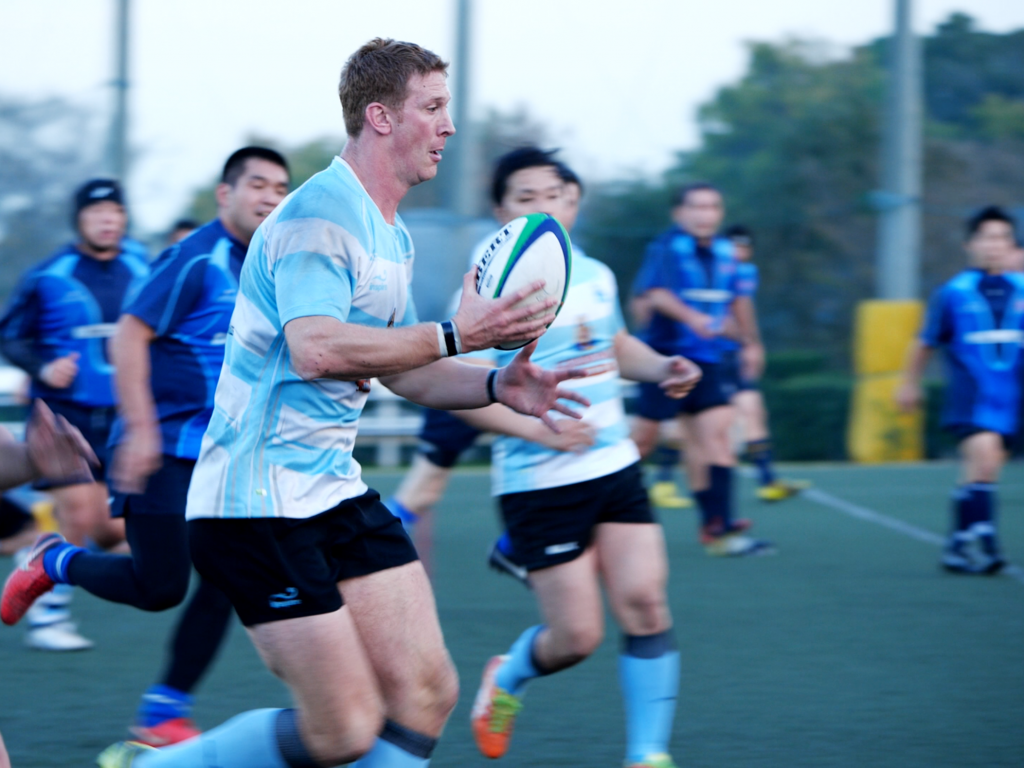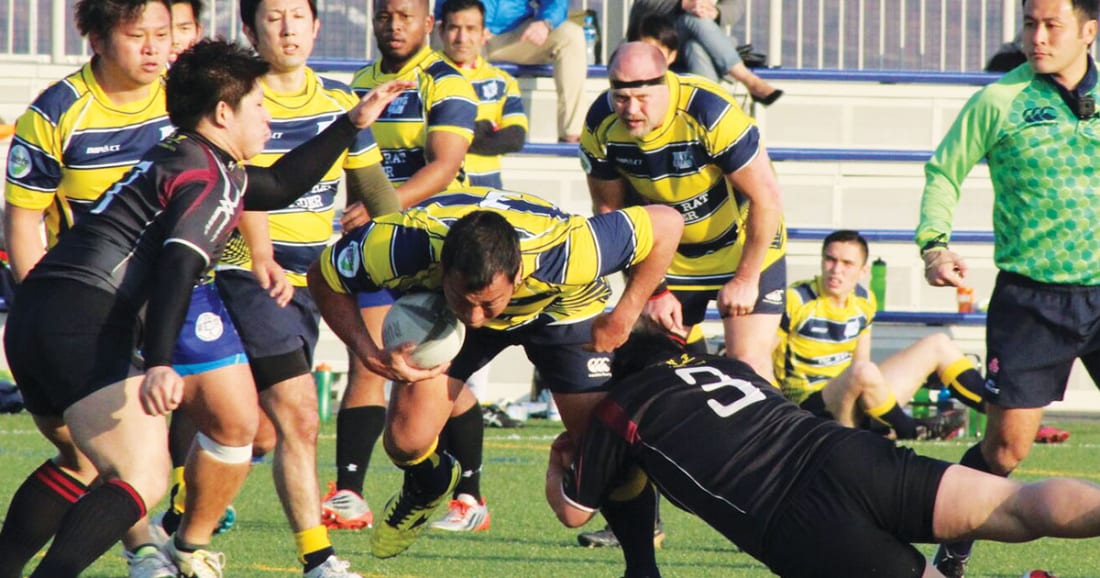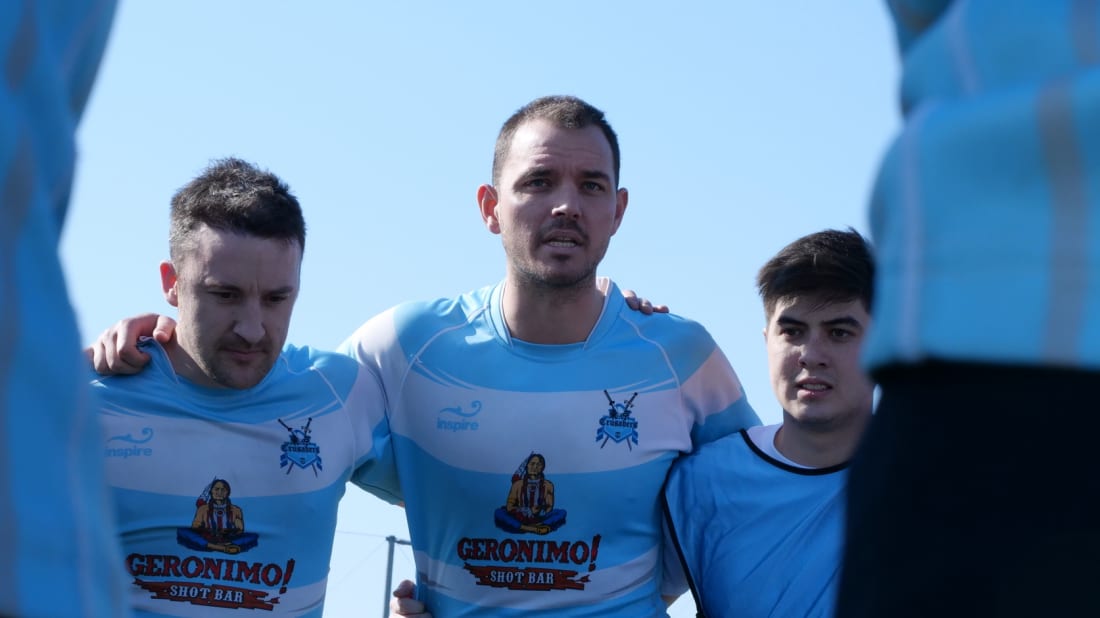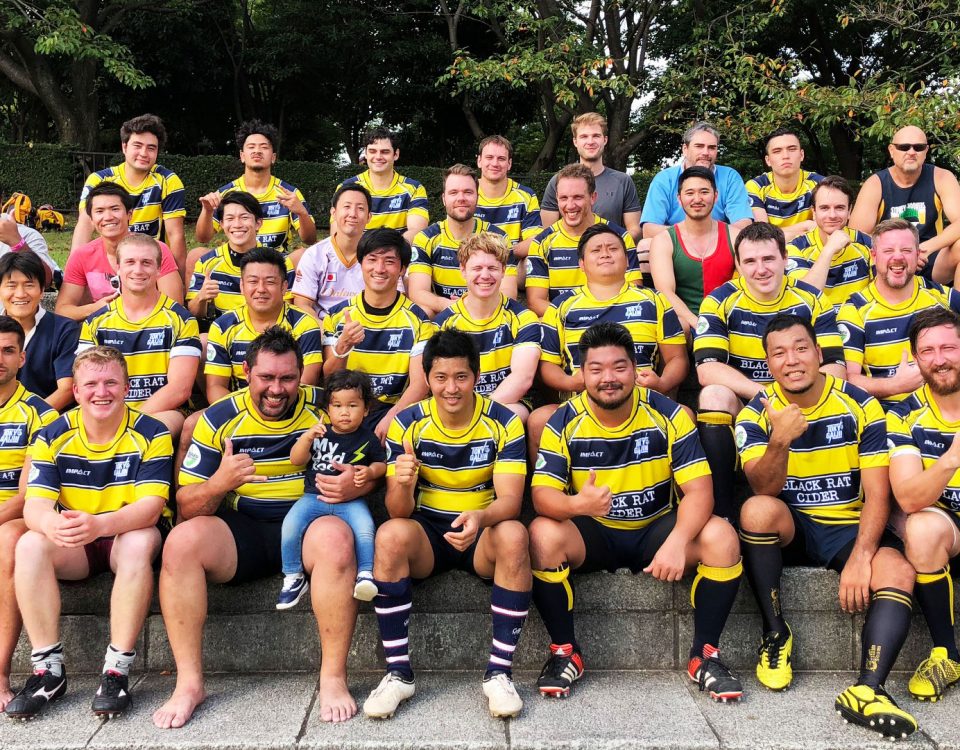As of this year I am now in my 20th year of life as a recreational rugby player. Slowly over the course of those 20 years rugby has developed from a relatively niche sport that was new to the realms of professionalism, to a sport that is continuously growing in popularity on a truly global scale.
With Japan’s acquisition of the title of Rugby World Cup 2019 host, the sport is showing its desire to spread its tendrils beyond the reaches of “traditional” rugby nations (the competition will officially take place this autumn).
As such I felt there was no time like the present to get involved in the club rugby scene in Tokyo. I am glad to report this decision has been well and truly vindicated. Having similar thoughts yourself? Well here’s how you can go about it…
What Do I Need To Know?
Ultimately club rugby in Tokyo is still trying to find its footing. This can be attributed to a lack of green space, lack of funding, lack of consistent participation numbers and the workaholic lifestyle that most people in the city get sucked into. Rugby clubs here often don’t have a local stadium or home base. Most clubs are nomadic and matches are typically played in areas where pitches can be rented from the local council or some other organization. Likewise don’t expect big state-of-the-art facilities where you can get changed, showered and have a few pints in the clubhouse bar with your teammates after the game.
However, it’s not all doom and gloom in Tokyo’s amateur rugby scene. The fact that you often get changed at the side of the pitch pre- and post-game followed by a few cans of beer near the local train station (and possibly a sojourn into a nearby izakaya) lends it an air of authenticity. If you’re like me, you may well appreciate it as a little bit of a romantic throwback to the amateur era that the sport only recently emerged from in 1995.
On top of the nostalgia factor there are plenty of other positives — the standard of rugby is pretty good, the international clubs are open to people of all levels of ability and players of all stripes, and there are options to play the game both competitively or at a more leisurely pace — not to mention the opportunity to go on both local and international tours.
It’s also worth noting that club matches are always played on Sundays in Japan, almost without exception.
Who To Play For?
After a little bit of “umming and ahing” about whether or not I should get back into playing rugby again, I finally took the plunge last summer. Or at least I tried to. I initially found locating a club in Tokyo a little difficult, though this was in part due to the sickeningly sticky heat of Tokyo’s summer which causes many of the clubs go through an end-of-season hiatus.
An email that I sent to Tokyo Gaijin Rugby Football Club eventually received a reply in mid-autumn with an invitation to join a light training session followed by a barbecue. There are certainly worse ways to spend a sunny Sunday afternoon so I dusted off the mouth-guard, laced up the boots and took to the field once more. Thankfully, I haven’t looked back.
There are rewards to playing amateur rugby in Japan; playing rugby near the foot of Mount Fuji, representing the league in the New Zealand Ambassadors Cup and meeting a diverse, multi-ethnic network of people are all distinct possibilities. If you’re looking for a club with a cosmopolitan vibe and one where English is the main form of communication then there are a few teams that should top your list.
Tokyo Gaijin Rugby Football Club is arguably the biggest international rugby club in Tokyo with a demographic of roughly two-thirds expats, one-third Japanese natives. Currently they feature in the Kanto-based Shuto League, Katsushika League and the Tokyo Cup. They also play regular friendlies against teams in neighboring prefectures like Saitama and Yamanashi, along with two annual tours to the Saigon and Bangkok 10’s tournaments respectively.
Tokyo Crusaders are the arch rivals of the Gaijins and are likewise a healthy mix of northern and southern hemisphere expats combined with a smattering of local players. They also compete in the autumnal Shuto League and Tokyo Cup year on year. Again, internal and external tours are a common feature of the Crusaders’ fixture list.
Yokohama Country and Athletic Club (YCAC) is a club lying just to the south of the capital in Yokohama city. They are somewhat of an anomaly in Japan’s amateur rugby scene with an impressive home base that comes fully equipped with an onsen, swimming pool, yoga studio, fitness center and clubhouse bar. The embarrassment of riches do come in exchange for an annual YCAC membership fee.
An honorable mention goes to Tokyo’s All France Rugby Club. Although they operate under the guise of a French club, they welcome all nationalities and use English as one of their main modes of communication. They also compete in the Shuto League and their own tournament, the AFRC Cup.
How Do I Join?
All of the aforementioned clubs have email addresses, fixture lists and other pertinent information on their websites. All levels of ability are welcome particularly to training sessions (which are typically on non-matchday Sundays). How much game time you get may be commensurate with your previous experience on the pitch. In saying that, as participation numbers aren’t always as high as most clubs would like, it’s not unprecedented for relatively uninitiated players to get competitive game time from the get-go.
If you are new to rugby, it might be an idea to join the Takadanobaba touch rugby sessions on Thursday evenings just to improve some of your basic skills before getting thrown to the wolves on matchday Sunday. Information can be found on the organization’s (STRUG) Facebook page.












